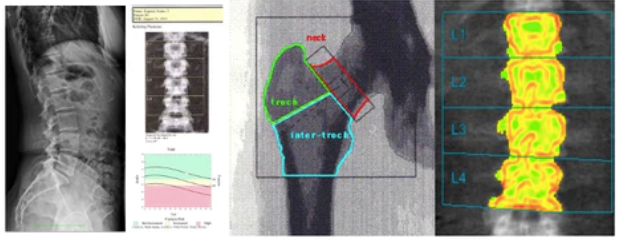Who is at HIGH risk for low-trauma Fractures?
March 23, 2024 3 min read

Bones fracture for a variety of reasons, such as the intensity of the impact, angle of impact and the properties of the bone itself. We hear a lot about bone density and fracture risk and while the density of bone is an important aspect of the overall strength of bones, whether or not a bone breaks may have little to do with bone density and more to do with the bone quality/structure. For bones to be strong they need both a good density and structure/bone meaning the bones have resilience to impact. Think about gymnasts or any sport that involves impact and they can land and not break a bone. The older we get the less bone resilience resulting in more fractures from a simple fall.
Healthy bone is both dense and flexible. Certainly, if the bone density is low enough, bones will fracture more easily. However, density alone is not the only bone feature to think about when considering an individuals fracture risk.
Consider the two women in the example below.
Let’s say that there are two women with the exact same bone density and same body size. One of the women has sustained two low impact fractures of major bones. The other woman has not sustained fractures.
What would cause one person to fracture more easily than another?
In short, the likely answer is that something is wrong with her bone quality, even though her bone density is identical to the other woman. The fractures indicate that her bones are more fragile and that her case requires more detective work by a doctor specializing in osteoporosis. Several lab tests should be ordered in an effort to answer this question, including bone turnover markers (BTM). BTM's such as C-telopeptide (CTX) and procollagen type one (P1NP) can help determine whether or not active bone loss is occurring. Also, a complete history and nutritional assessment should be evaluated.
Bone Turnover Markers definition: area series of protein or protein derivative biomarkers released during bone remodeling by osteoblasts or osteoclasts.
Men and women suffer fractures, although women suffer the most and earlier in life, especially around menopause we begin to see an increased risk of wrist fractures in women, but not men. For women, at menopause and the 5-7 years post menopause can lose 15-20% of their bone density, especially if another bone draining issue is occurring, such as a poor diet, lack of exercise or vitamin D deficiency.
Just a few more of the possibilities as to why some people have significant osteoporosis and a high fracture risk
- Perhaps the diet is low in protein, calcium, vitamin D, magnesium, potassium and other bone nutrients. Studies have shown that protein is essential for bones. 1/3rd of our bones are protein. About 30% or more of our calories should come from protein.
- Poor digestion, especially loose stools, which often points to malabsorption of nutrients.
- Poor dietary habits, such as not eating a nourishing breakfast and instead drinking coffee and having a pastry.
- A diet high in processed foods.
- Genetics can play a profound role in bone health - often patients report that one or both of their parents suffered fractures, especially a hip fracture.
- Lower muscle strength and balance due to inactivity or health conditions.
- Medications could be interfering with bone health, such as a proton pump inhibitor (used for gastric reflux). Another top medication that interferes with bone health is a corticosteroid (Prednisone).
Understanding your personal risk, beyond bone density, by assessing factors other than bone density alone, will help you determine a safe and effective course of action, including exercise.
Trabecular Bone Score (TBS) Test: The TBS test is only done on a bone density machine. However, the machine, Hologic or GE Lunar must have the TBS software. Most facilities do not have it, but more are paying the $10,000 for the software due to more demand.
Bottom line: most doctors today tend to treat a bone density test rather than the individual person. It's important for doctors and patients the importance of looking at the full picture for one person before prescribing anything. The more you learn about bone density, osteoporosis management and treatment, the better you will be able to advocate for yourself.
Want more information from Dr. Lani?
- Watch the 3-part video series Osteoporosis Fundamentals Bundle designed for the newly diagnosed. Currently on sale!
- Get a second optionfrom Dr. Lani
- Join the live weekly MasterClass for live lectures.
- Read Dr. Lani's No-Nonsense Bone Health Guide.
Subscribe
Sign up to get the latest on sales, new releases and more …

